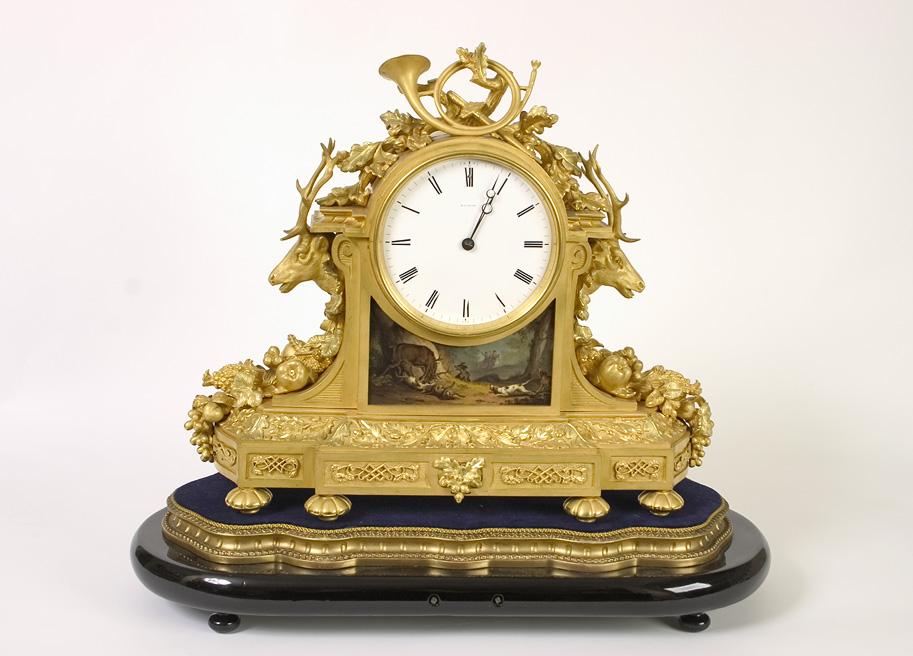An Ormolu and Porcelain Mantel Clock
Made by Abrocot and Delettalz, Retailed by W.C. Shaw, Paris, circa 1840
Finely cast depicting animals including boars and stags, with festoons and garlands, two-toned mercury gilding, inset with finely painted hard-paste porcelain plaques decorated with a hunting scene amidst a forest landscape, the white enamel dial signed W.C. SHAW, PARIS, with rare chain-driven strike, stamped on dial plate Abrocot and Delettalz, mounted on the original shaped wooden plinth
The clock: 17 ½ in (44.5 cm) high, 20 in (50.8 cm) wide, 7 ½ in (19 cm) deep
At the 1900 Paris Exhibition, Gallé exhibited a similar commode called Ipomoea, which was well received, and is now in the collection at the Victoria and Albert Museum, London. Its exhibition inspired the commission of the present commode, Nocturne, for the important collector Henry Hirsch of Nancy. Hirsch did not like the discrete marquetry on the Ipomoea commode, so requested something different. The same framework was used but the morning glories on the broad panels of the Ipomoea were replaced by chrysanthemums and a mother-of-pearl butterfly. It is believed that no other Nocturne commode was ever made and this piece can be regarded as an undiscovered treasure.














